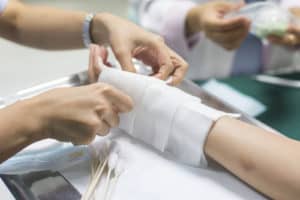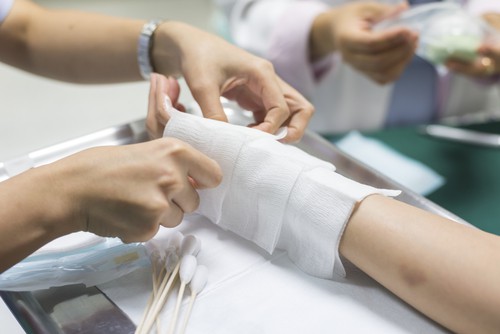
Skin burns are a common household occurrence and can range from mild, which can be treated at home with over-the-counter remedies, to severe that require immediate medical attention. It’s important to know how to identify the degree of the burn so you can properly treat it for the best chance of healing.
First-degree burns
First-degree burns are the most common type of burn, and often happen by scalding from a hot liquid or touching a hot surface like a stovetop or a curling iron. First-degree burns affect only the outer layer of skin, or the epidermis, and present as a dry, red patch of skin that isn’t very large.
Symptoms of a first-degree burn include skin that may be warm to the touch, tenderness in the burned area that lasts for a few days, pain, swelling, dryness, peeling or itching. Treatment of first-degree burns are usually includes topical skin care products like aloe vera cream or antibiotic ointment, and over-the-counter pain medication like acetaminophen. It’s important to drink plenty of fluids and keep the burn covered with a non-stick bandage.
Second-degree burns
Second-degree burns penetrate the top layer of skin, the epidermis, and reach the second layer of skin, also known as the dermis. They are usually caused by scald injuries, chemicals, sunburns, and burns from flames. Second-degree burns usually blister and are much more painful and swollen than first-degree burns. They may appear wet and shiny, deep red, and are painful to the touch.
Second-degree burns are usually treated with antibiotic cream or ointments prescribed by a dermatologist. They need to be kept clean and bandaged to prevent infection, and it’s important not to break the blisters open, which can cause infection. Do not apply cold water or ice to second-degree burns, which can cause damage to the tissue around the burn. Second-degree burns take three weeks or more to heal without scarring, but usually cause pigment changes in the skin.
Third-degree burns
Third-degree burns go through both the first and second layers of skin into the third and lowest layer of the skin, the hypodermis. These deep burns may appear white and fleshy like burned charcoal because they affect the fatty tissue under the skin.
It depends on how much of the body surface area is affected, but in most cases, third-degree burns require immediate medical attention. Treatment may include intravenous antibiotics to prevent infection or replace fluids. Without surgery, these wounds take a significant amount of time to heal and cause severe scarring.
Disclaimer: This blog provides general information and discussion about medical, cosmetic, mohs, and surgical dermatology. The words and other content provided in this blog, and in any linked materials, are not intended and should not be construed as medical advice. If the reader or any other person has a medical concern, he or she should consult with an appropriately-licensed dermatologist or other health care worker.
